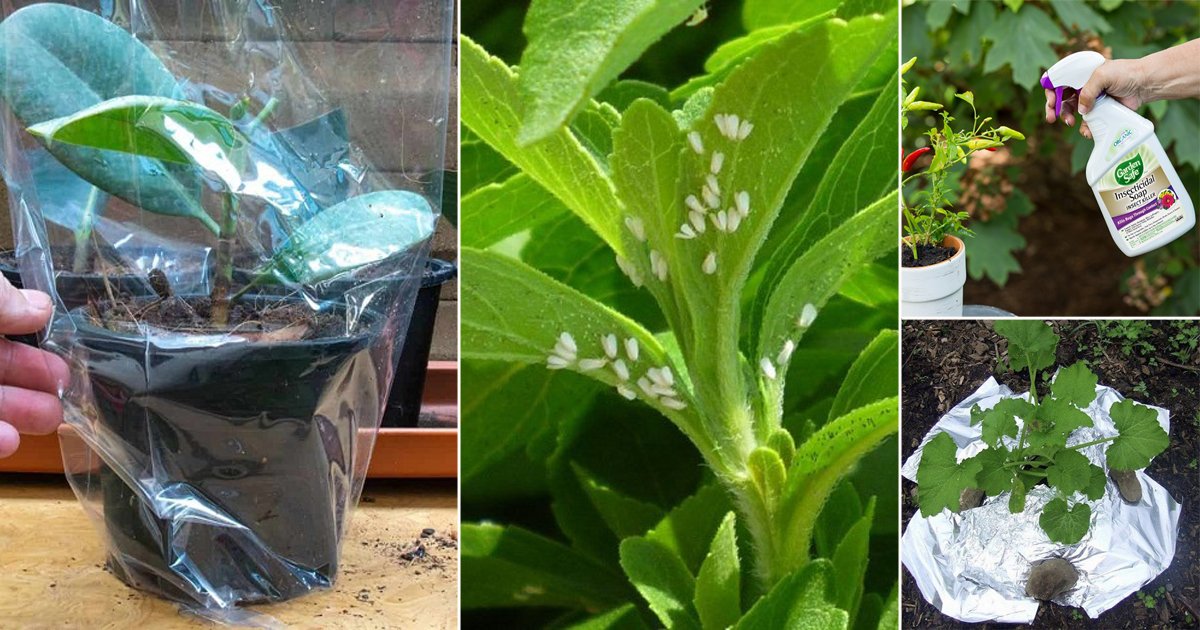When it comes to pests, whitefly is one of the most common and most damaging to plants. Whitefly populations can explode quickly and cause serious infestations. Once they have taken hold, whiteflies can be tough to eliminate, so it’s important to recognize the early signs of infestation and apply the necessary treatment to get them under control.
Despite its name, whitefly is not a true fly, but is closely related to aphids, mealybugs, and scale. These soft-bodied winged insects feed on plant sap, causing leaf damage and a host of other problems. They are moth-like in appearance, about 1/16th of an inch in length with an elongated, somewhat triangular shape, and are most often gray-white in coloring. Because of their tiny size, they can be hard to spot.
As a grower of herbs like baby sage, nothing is more frustrating than discovering those tiny white pests called whiteflies flying around and sucking sap from your plants While these common garden insects are seldom fatal to plants, whitefly infestations can certainly weaken and stress baby sage over time
The good news is there are effective organic methods and simple solutions for getting rid of whiteflies from your baby sage plant Through extensive research and personal experience battling whiteflies in my herb garden, I’ve compiled the best techniques for eliminating these annoying pests while keeping your baby sage healthy and productive
What are Whiteflies?
Let’s start by getting to know what exactly whiteflies are and how they cause problems for plants like baby sage.
Whiteflies are very small flying insects that feed on the sap from plant foliage and stems. They are related to aphids and mealybugs. Whiteflies get their name from their powdery white wings and body color.
These pests cling to the undersides of leaves and use their piercing mouthparts to extract nutrients, resulting in yellowed, wilted, or drooping foliage. As they feed, whiteflies excrete sticky honeydew that leads to the growth of black sooty mold.
An infestation can quickly spiral out of control as females can produce hundreds of eggs. Both the adult flies and their nymphs cause damage. Controlling whiteflies early is crucial before populations explode.
Signs of Whiteflies on Baby Sage
Be on the lookout for these common signs of whiteflies on your baby sage:
-
Tiny white insects flying up when foliage is disturbed
-
Yellowing or browning leaves
-
Presence of honeydew or black sooty mold on leaves
-
Stunted plant growth
-
Leaf drop
-
Lackluster, wilted appearance
Act promptly after noticing any of these indicators of whiteflies to treat the infestation before lasting harm is done.
Organic Whitefly Treatments for Baby Sage
The key to managing whiteflies organically is consistency. Repeat these non-chemical remedies every 5-7 days for at least 2 weeks to break the pest life cycle:
Water Spray
Dislodge adults and nymphs by directing a strong stream of water to the undersides of leaves.
Insecticidal Soap
Spray insecticidal soap directly on flies and larvae. It disrupts their waxy coatings, causing death.
Neem Oil
Neem oil smothers and repels whiteflies when applied to infested plants. It prevents feeding and egg laying.
Vacuuming
Use a handheld vacuum on low suction around leaves to remove flies. Empty the vacuum contents in soapy water.
Yellow Sticky Traps
Hang traps around infested plants to catch adult whiteflies and monitor population levels.
Encourage Natural Predators
In addition to direct treatments, attract beneficial predatory insects to your garden to naturally control whitefly populations:
-
Lady beetles – Both adults and larvae feed on whitefly eggs and young nymphs.
-
Lacewings – The larvae have huge appetites for whitefly nymphs.
-
Syrphid flies – The maggots feed on whitefly larvae.
-
Parasitic wasps – Species like Eretmocerus eremicus lay eggs inside whitefly nymphs.
Plant flowers like dill, cilantro, and fennel to attract these helpful predators to your baby sage.
Prevent Whiteflies from Returning
Make your garden less inviting to future whitefly infestations with these deterrent strategies:
-
Use reflective mulches like aluminum foil or floating row covers as barriers
-
Prune and dispose of any severely infested stems and leaves
-
Check new plants thoroughly for whitefly adults, eggs, and larvae before bringing home
-
Use yellow sticky traps continuously to catch stray whiteflies
-
Allow soil to dry slightly between waterings to stress whiteflies

Take a closer look:
Look for insects or eggs on the backside of leaves.
HOW TO RECOGNIZE THE PRESENCE OF WHITEFLIES
Photo by: ULD / Shutterstock
How to Get Rid of Whiteflies (4 Easy Steps!)
FAQ
What is the best remedy for whiteflies?
What are the white bugs on my sage plant?
How do I get rid of whiteflies on my herb plants?
How do I keep whiteflies off my plants?
